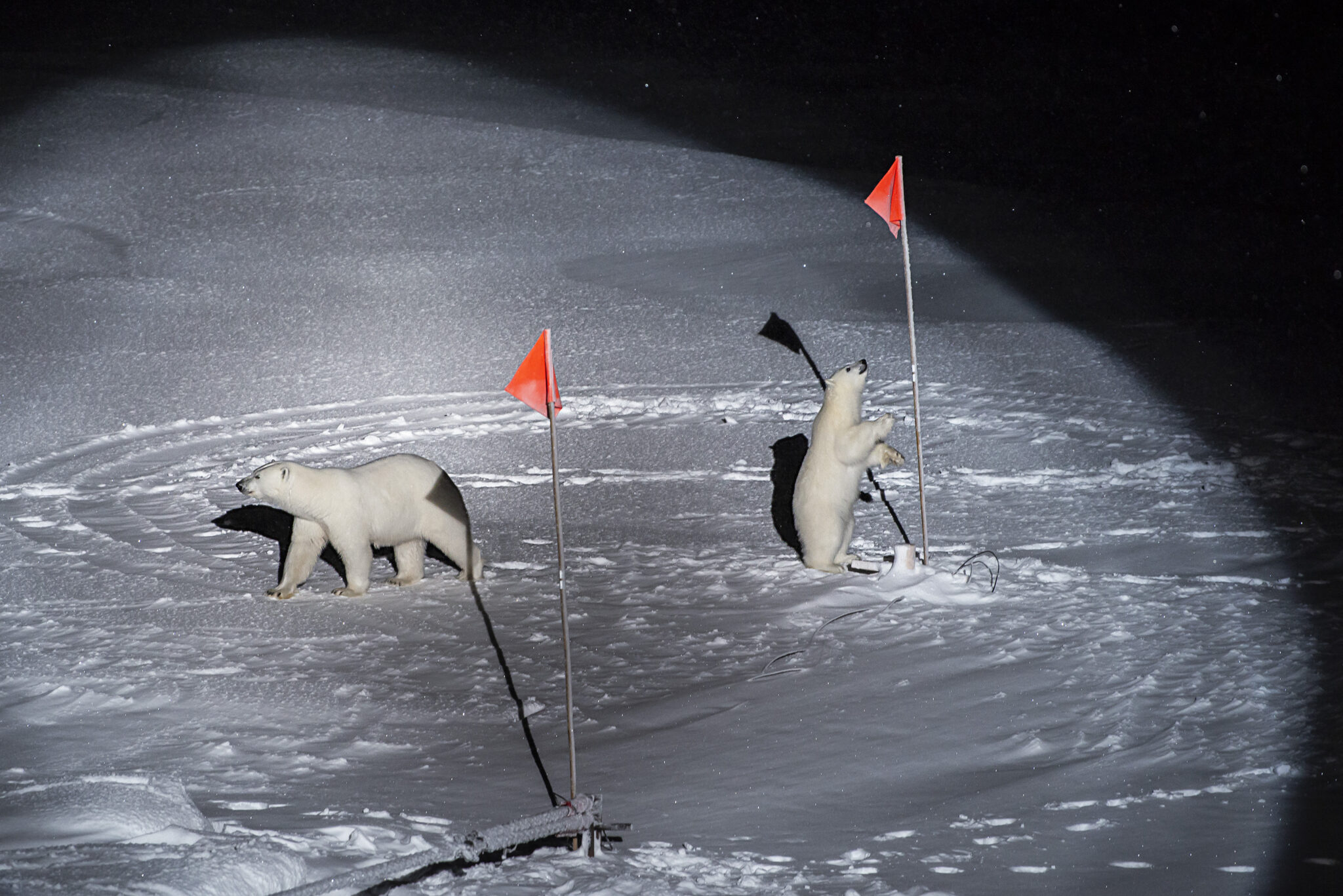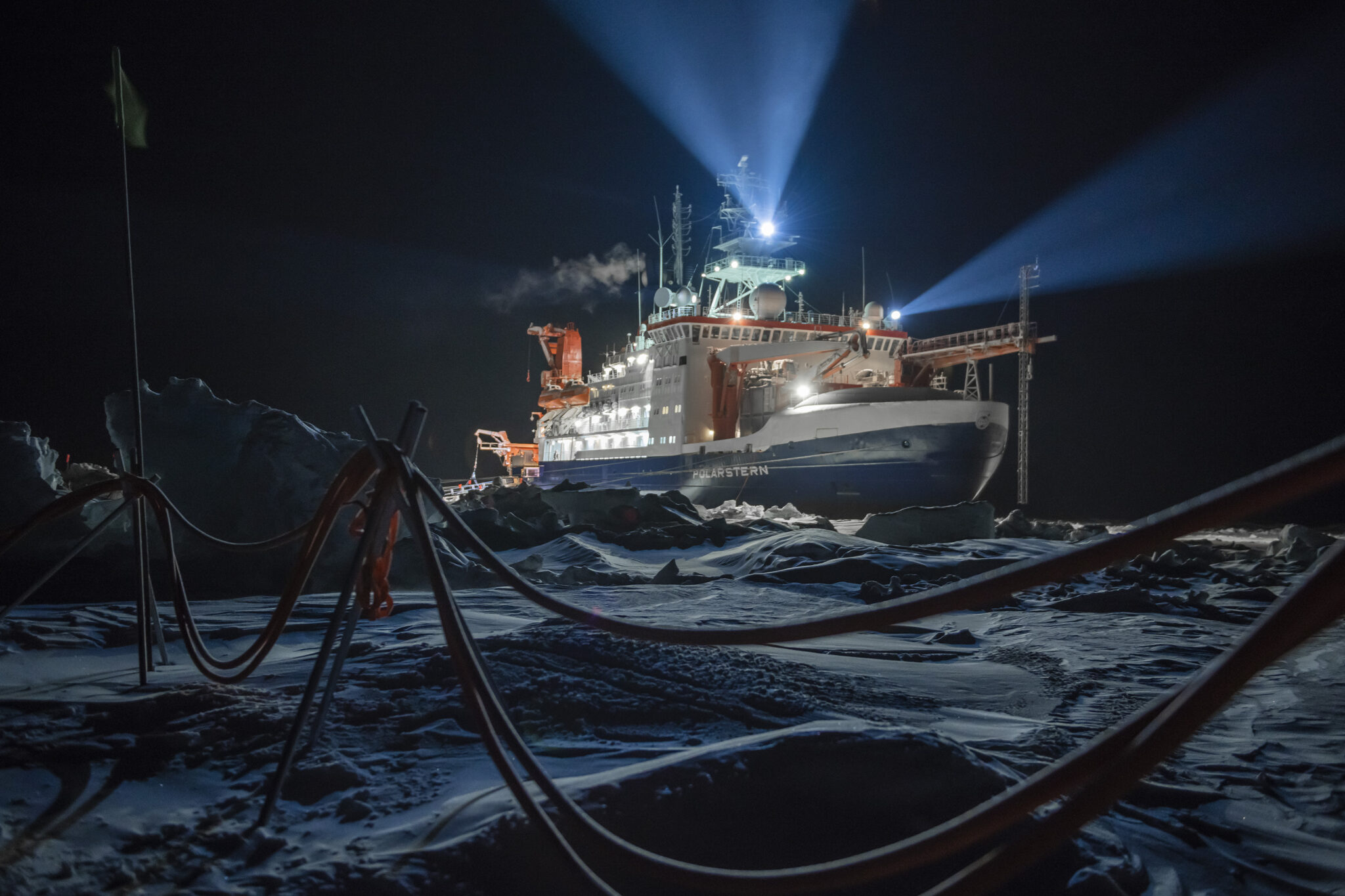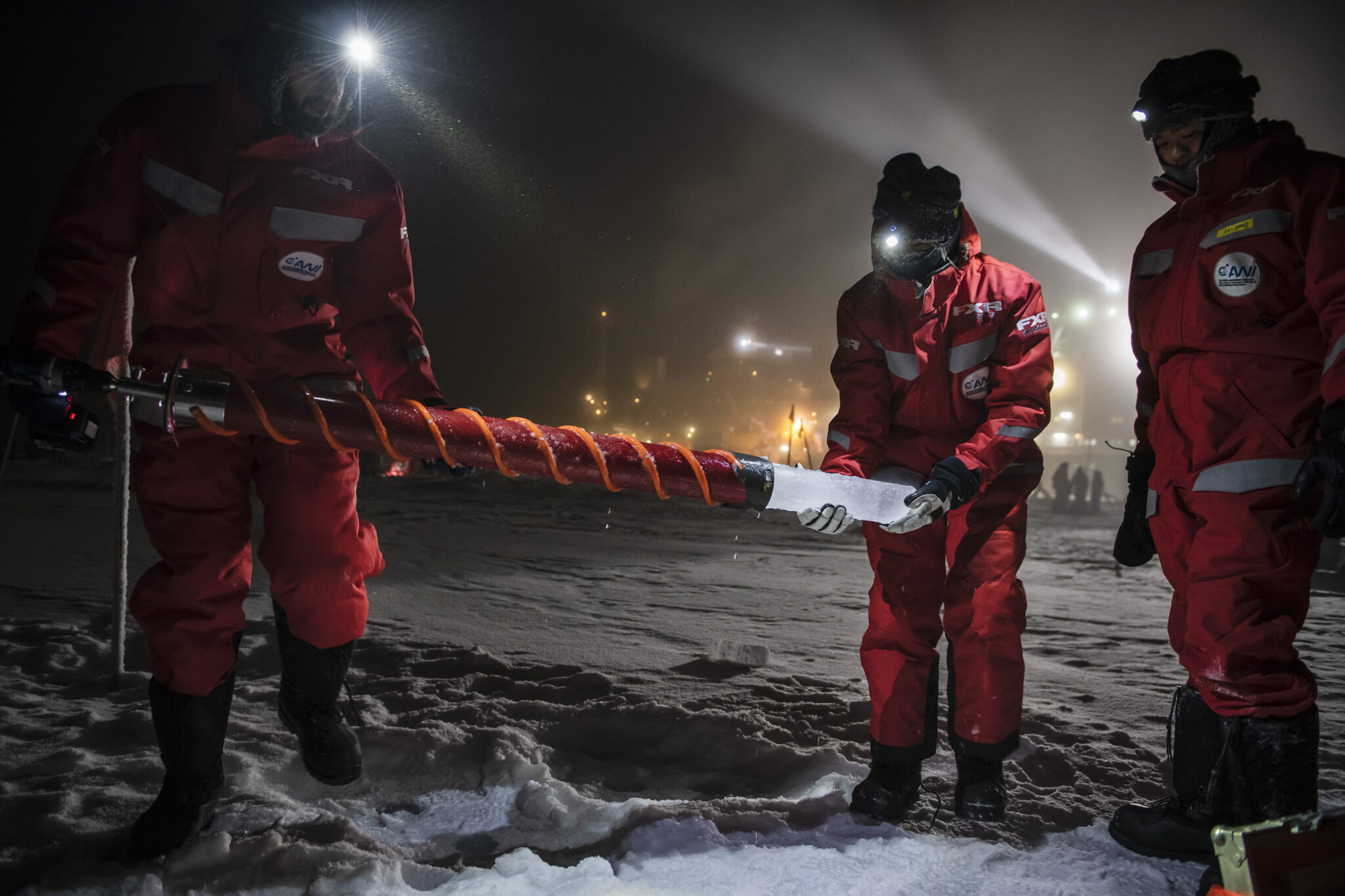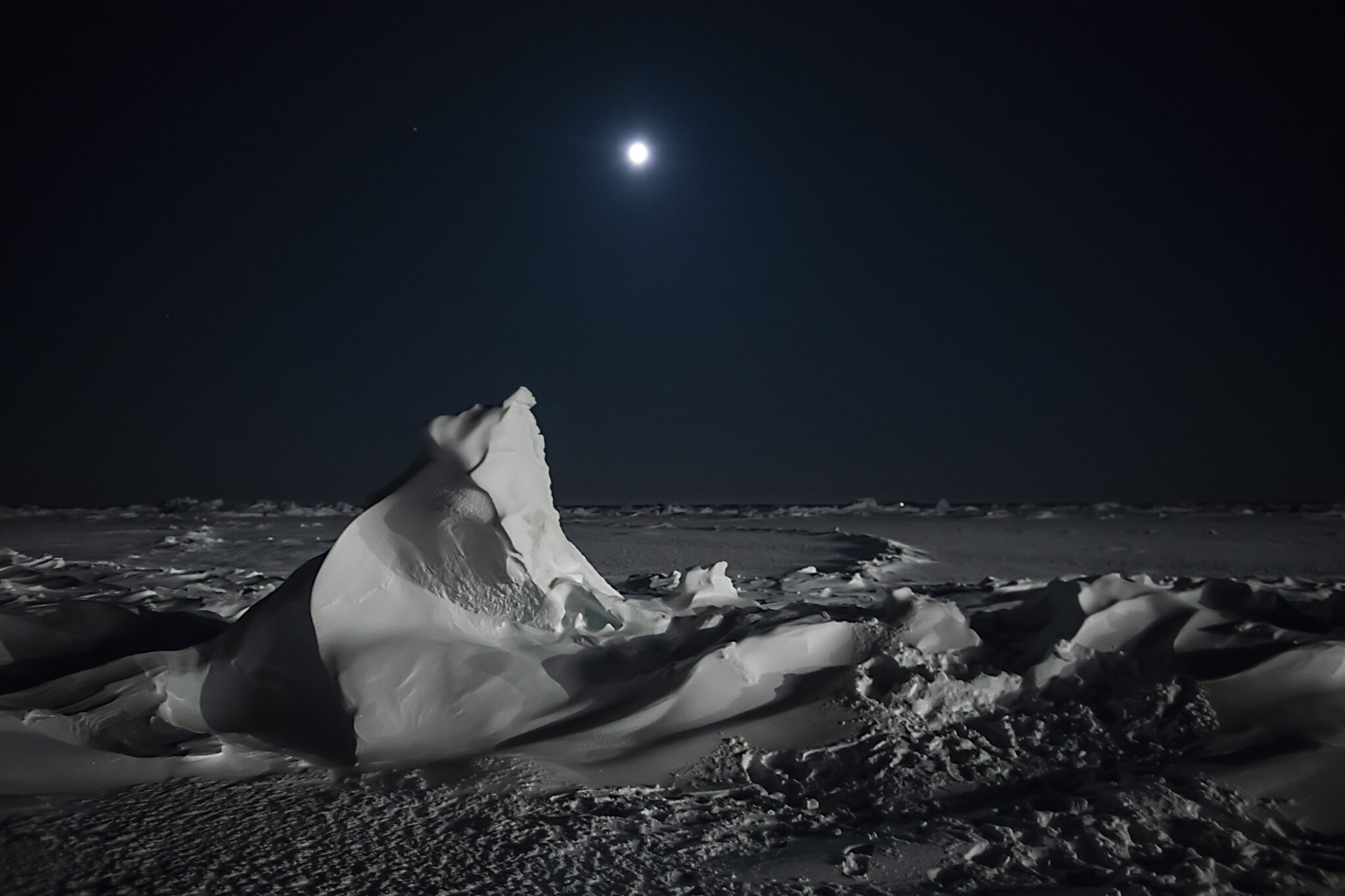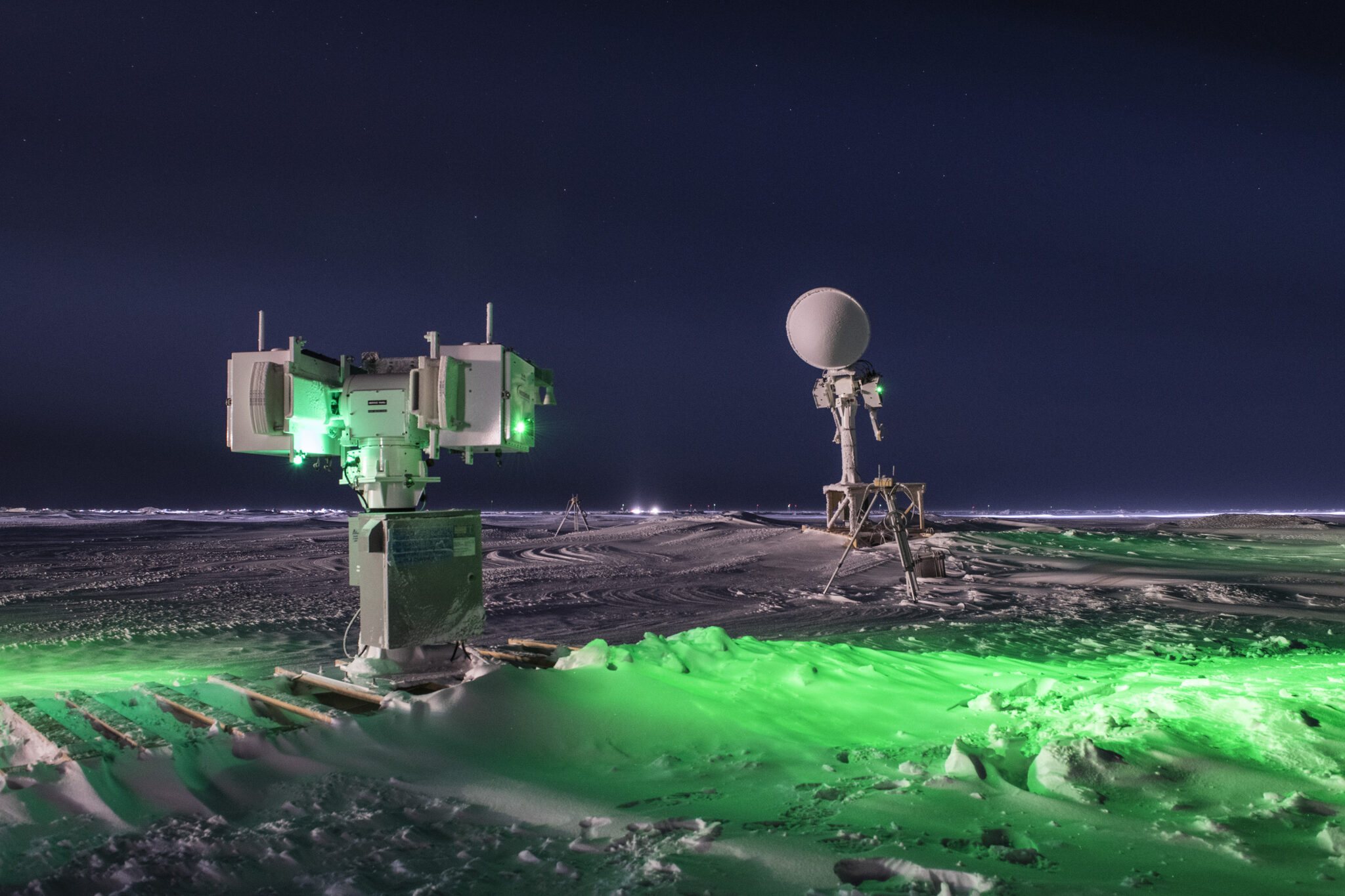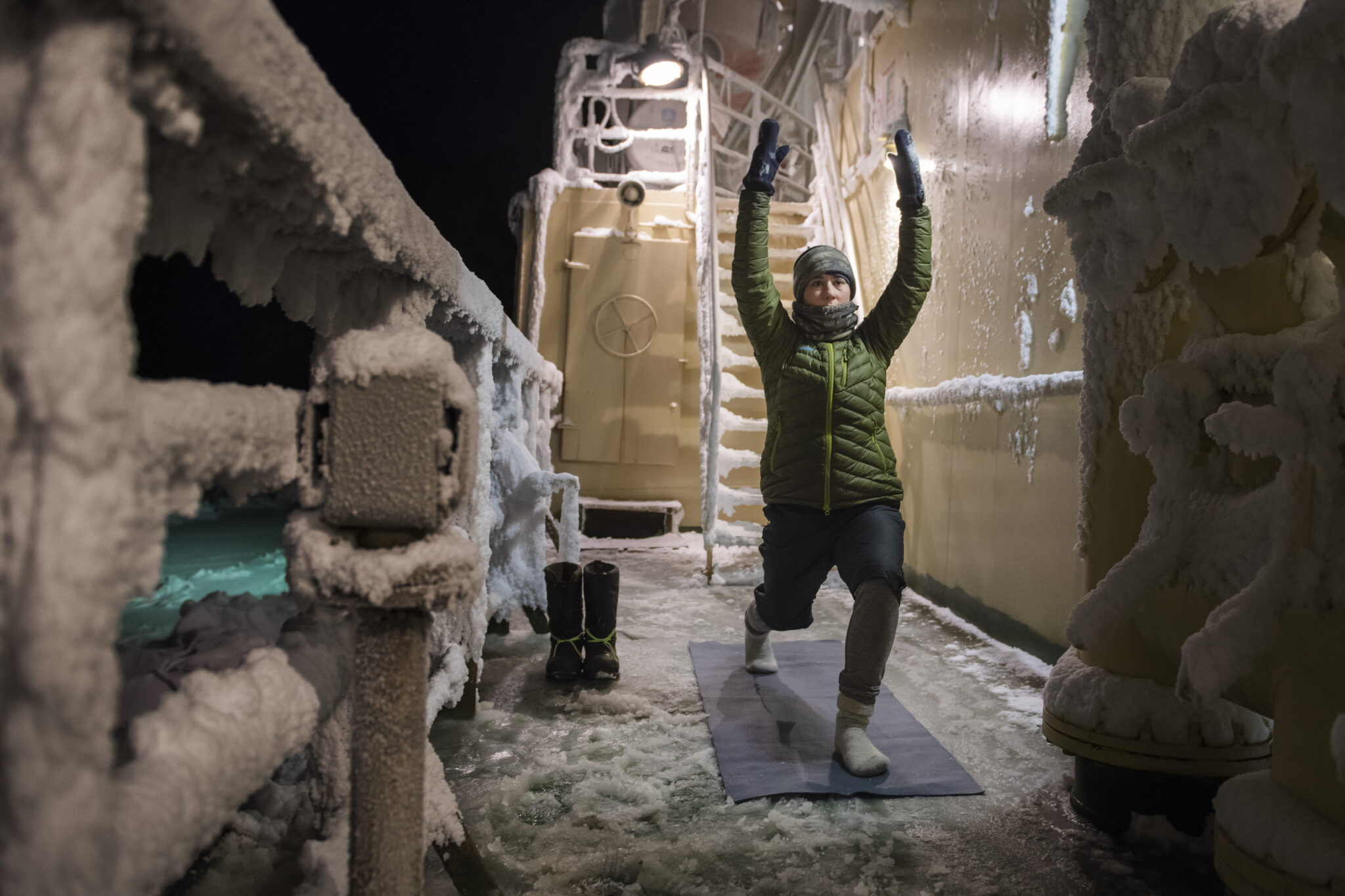Esther Horvath
POLARNIGHT 25/24
The largest Arctic expedition of all time
Esther Horvath is the winner of 2020 World Press Photo in the Category Environment and the first Hungarian female photographer to win this contest.
Her 1st prize photo was taken in the Arctic: a polar bear and her cub coming close to the equipment of MOSAiC expedition, that investigated the consequences of climate change in the central Arctic Ocean.
Since 2015, Esther Horvath has devoted her photography to the polar regions, documenting scientific expeditions and ‘behind the scenes’ daily life in several arctic stations.
After spending long periods in the Arctic every year, from September 2019 to January 2020 she documented MOSAiC expedition.
MOSAiC started the 20th September 2019, when the German research icebreaker Polarstern set sail from Tromsø, Norway, to spend a year drifting through the Arctic Ocean – trapped in ice. Its journey continued until the 12th October 2020, when the vessel arrived at the harbor of the northern German city of Bremerhaven.
The goal of the MOSAiC expedition was to take the closest look ever at the Arctic as the epicenter of global warming and to gain fundamental insights that are key to better understand global climate change. No ship had ever penetrated so far north into the central Arctic in winter as the Polarstern on this occasion.
During her journey – hundreds of kilometres from the world’s northernmost coastline, surrounded by pack ice, cold and darkness – Esther Horvath captured all of this, uniquely documenting everything for us with her fascinating photographs. From the most significant moments of the scientific research, to the daily life of the crew of the Polarstern and the extraordinary polar landscapes.
To look at her images is to take a trip in time through the various phases of this epic expedition.
The expression ‘POLARNIGHT 25/24’ refers to the mesmerizing feeling that Horvath experienced during the months she spent in the Arctic: the polarnight is an endless night, its pitch-black darkness feels longer than 24 hours, longer than the day itself.
In the photographs included in the exhibition, the perpetual darkness, illuminated by the powerful spot lamps of the icebreaker ship, gives the images an almost cinematic, studio environment – revealing to the viewer an important scientific research in the Earth’s last real wilderness.
Esther Horvath is a Fellow at International League of Conservation Photographers, iLCP, member of The Photo Society, member of The Explorers Club and science photographer for Alfred Wegener Institute in Germany.
She was born in Hungary and received her master in economics from West Hungary University. In 2012 following her passion for photography she moved to New York City in order to attend the International Center of Photography, where she graduated in Documentary and Photojournalism. After living 6 years in New York City, in 2018, she moved to Bremen, Germany.
Since 2015, she has devoted her photography to the polar regions, especially to the Arctic Ocean, documenting scientific expeditions and behind the scene science stories. She follows the work of multiple science groups that are working to better understand the changing polar regions.
By documenting the work and life of scientists who deliver important data, Esther hopes to help make a difference in how people understand what actually is occurring, and in collaboration with scientists, help raise public awareness regarding the fragile polar environment.
Esther’s work has been featured in National Geographic, The New York Times, The Wall Street Journal, TIME, Audubon Magazine, GEO Magazine among others.




